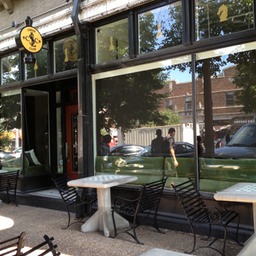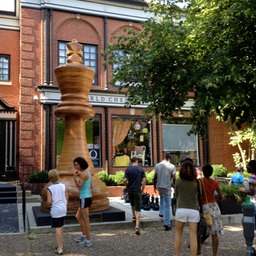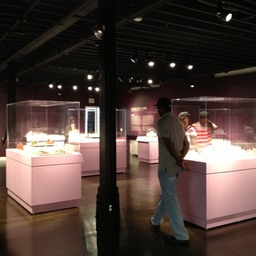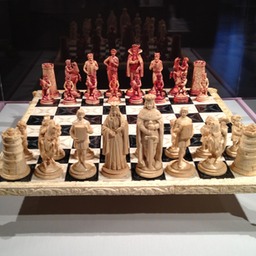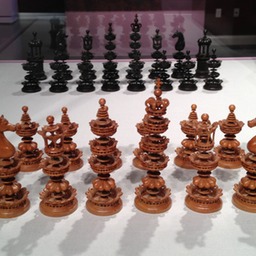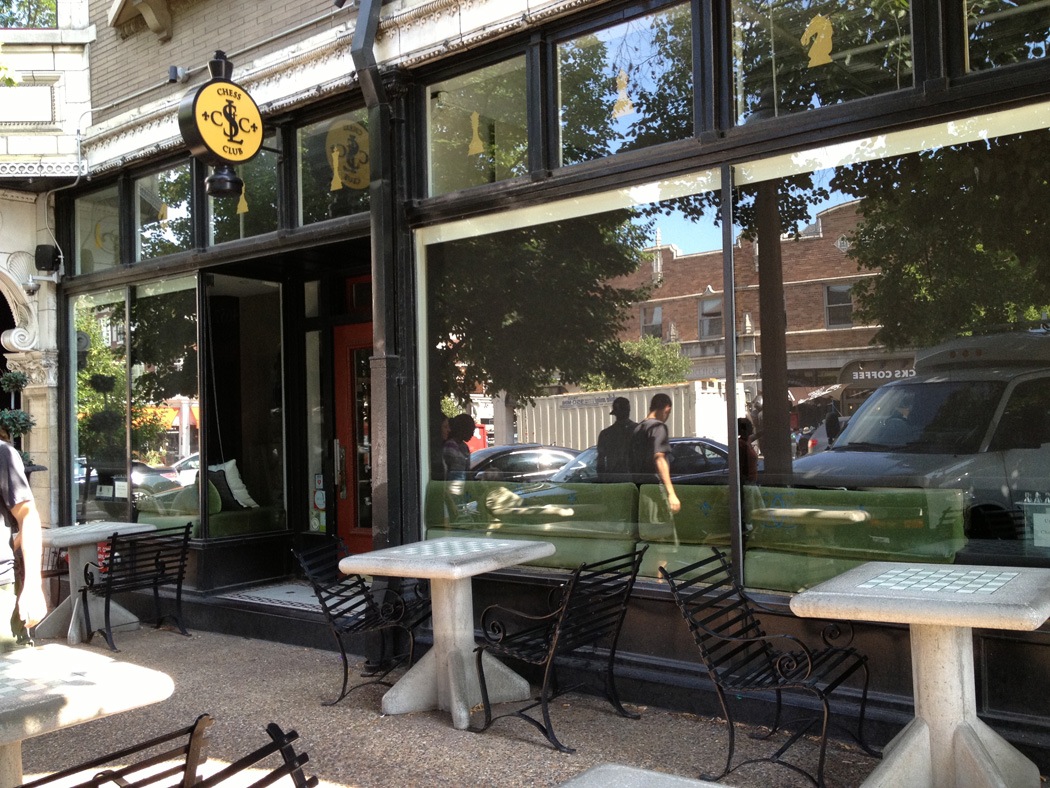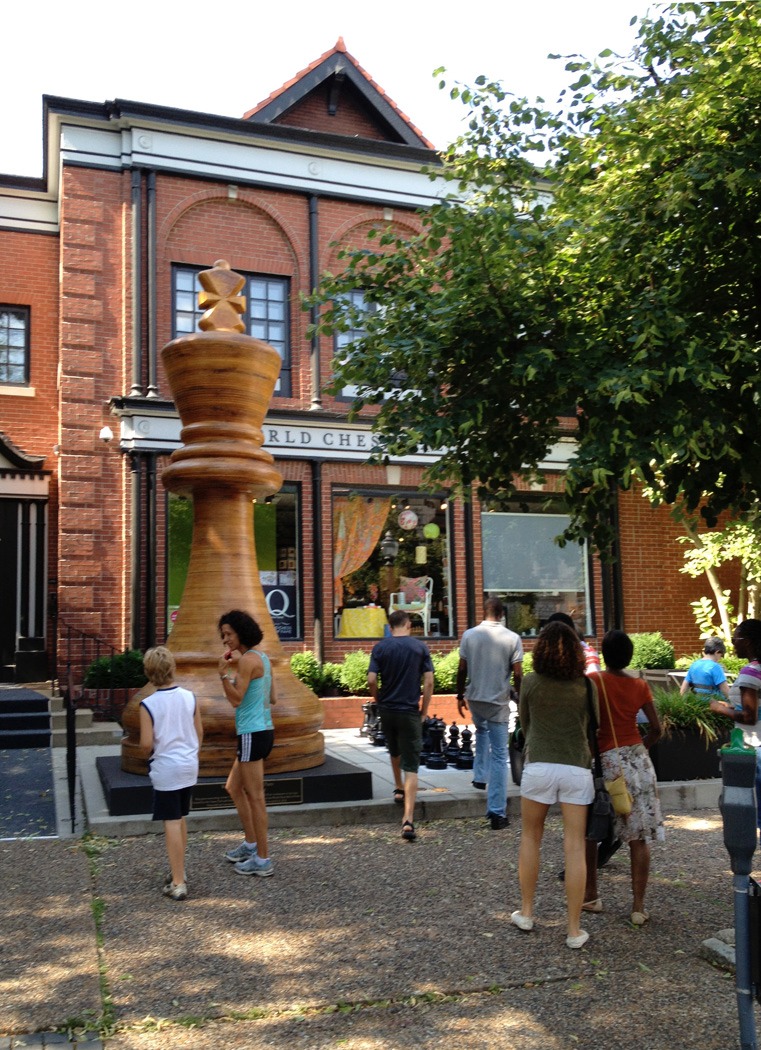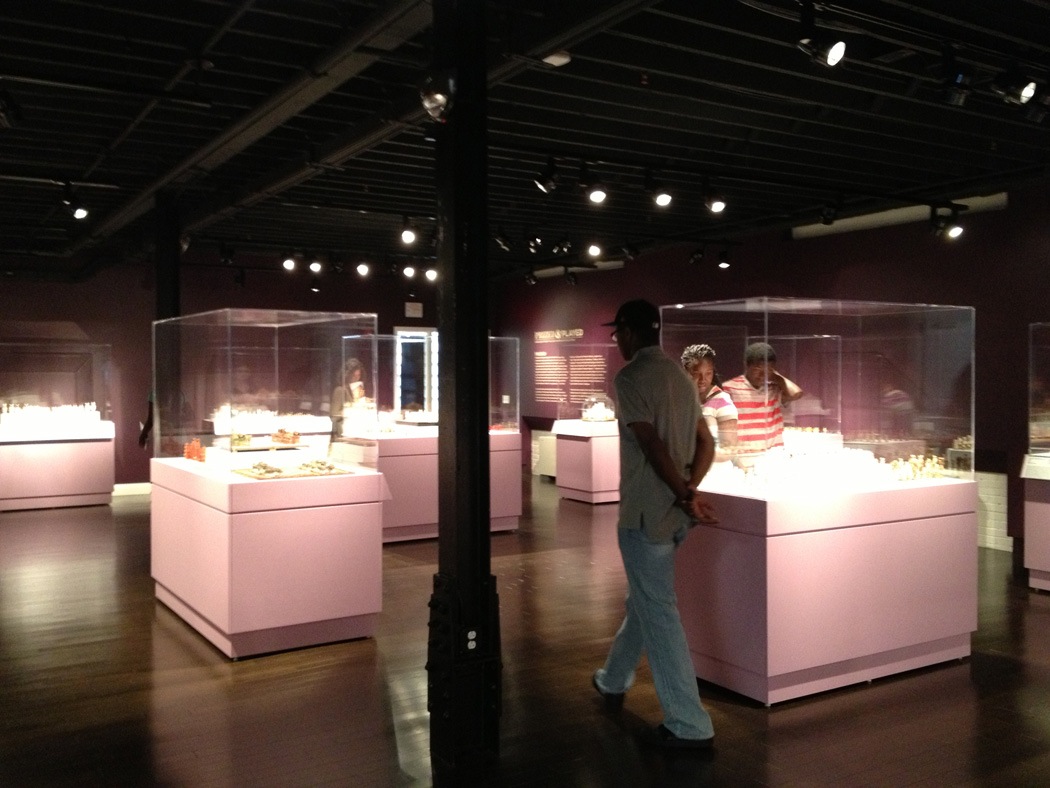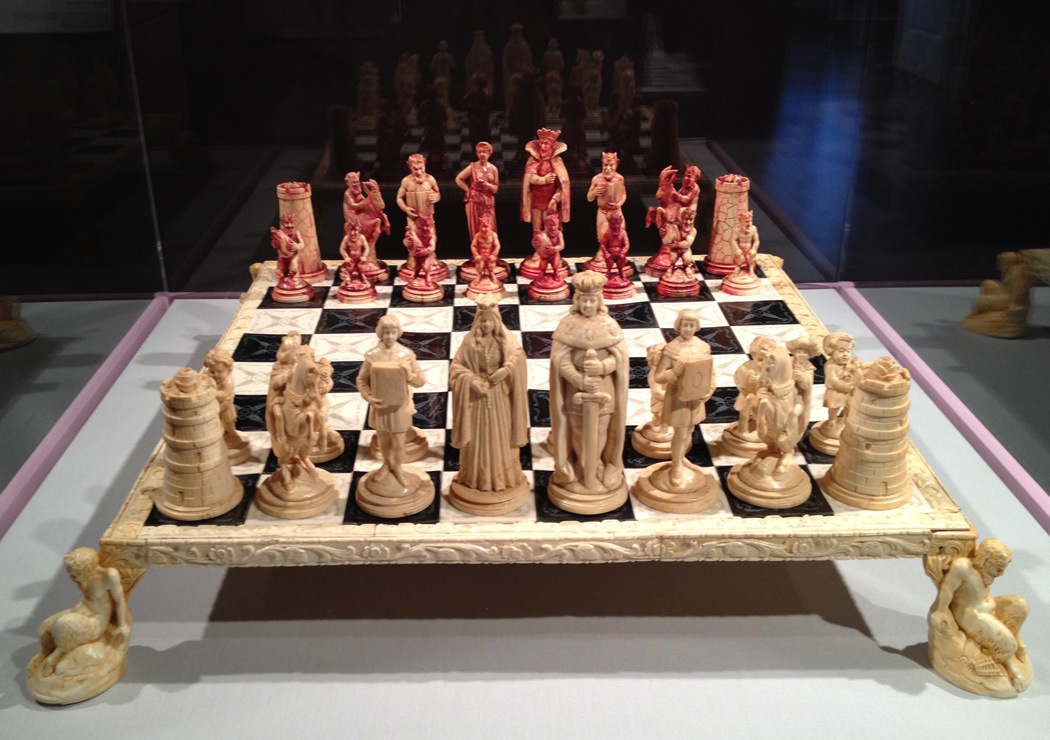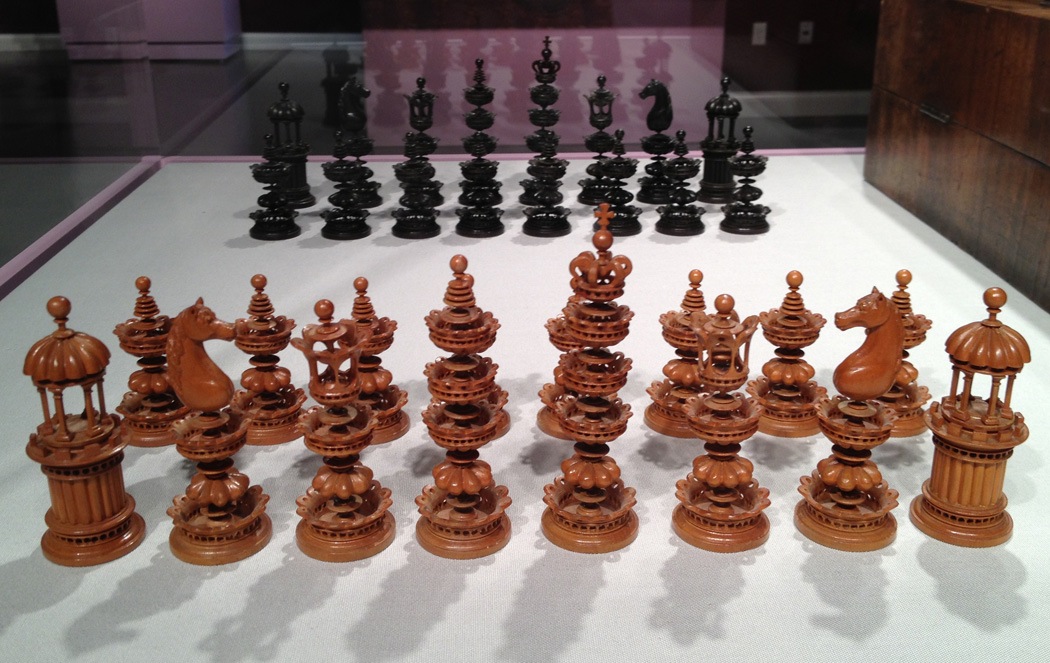World Chess Hall of Fame
From time to time we will post blogs of museum we have visited. We will try to only report on those not so familiar museums that have a unique quality or which make a particular impression on us.
The World Chess Hall of Fame
While Nora Pat was attending the SHEAR conference in St. Louis the weekend of July 19-21, I tagged along to do some work in our exhibit shop on the Hill and do a little sightseeing. Surfing the web I came across the World Chess Hall of Fame and discovered it was near where we were staying on the Central West Side. So, I planned to be there when they opened the doors at 10AM on Saturday. You might wonder as I did, how the WCHOF ended up in St. Louis. You can find the whole story on their website at worldchesshof.org, but it was a circuitous route through the cities of New York, Washington, D.C., and Miami before it ended up in St. Louis in August 2010. The international reputation of the Chess Club and Scholastic Center, located across the street, largely attributed to the decision. It’s hard to miss the Hall of Fame because of the giant King chess piece sitting between the front doors and the sidewalk. It’s made of laminated wood and stands at 14’7” high.
The WCHOF is housed in an historic (15,900 square foot) three-story former residence. I can’t tell you much about their permanent collection, because it was all in storage to make room for two special exhibits. The WCHOF also states that it offers interpretive programs that provide unique and exciting ways to experience art, history, science, and sport through chess. Not aware of this at the time of my visit, I was surprised to find the works of biomimicry artist, Bill Smith, in the first floor gallery. Although I didn’t see the connection to chess at the time, the catalogue says, “Like Smith’s work, chess is defined by rules, patterns, and interactions. The rules of a game are analogous to the laws of nature. Both games and nature are systems made up of rules within which players, planets, species or individuals must function.” Smith creates sculptures out of very fine wire in organic shapes, like a 7 foot diameter sphere that glowed in the dark. One of his works had to be displayed in the stairway, because it is 3 stories tall. The exhibit practitioner side of me kept wondering how he moves all these fragile pieces without damaging them.
The other exhibit took the entire 2nd and 3rd floors. It was a traveling exhibit, highlights selected from collection of Jon Crumiller, called Prized and Played. The 2nd floor displayed the Prized chess sets intended as objets d’art rather than used in play. Although some of the sets on the 3rd floor appear just as ornamental, they were all intended for use in play. These sets were collected from across Europe and Asia and date mostly from the 19th century. Wealthy patrons commissioned the Prized sets. Since the artists did not have to worry about their utility, they were free to demonstrate their skill in working luxury materials such as ivory, gold, silver, pearls and precious stones. In an Italian Good vs. Evil ivory set, bishops hold copies of Dante’s The Inferno. The ivory board is held up by 4 Pan figures for the legs.
Some of the Played sets on the 3rd floor were used in actual tournaments. One had the silver medallions attached to the box for every award won by the chess team that owned the set. There was also a 4-handed chess set, allowing 4 people to play at once. The docent, a chess player himself, said he had tried it, but victory was too random for his liking. There were some chess books and chess tables. There was a chessboard that had the signatures of all the players from the 1939 World Chess Tournament on the squares of the board. Each display case had informative labels mounted outside the case, and each gallery had a supplemental gallery guide. Prized and Played will be there until September 15th.
The building has been renovated with a new HVAC system. Since I got there at opening time, I heard the staff reporting the temperature and humidity readings for each floor. They also had sophisticated lighting and display cases, and the docents were all informative and engaging. The only problem I noticed was a lot of floor vibration when people walked by. This caused some of the pieces to walk a noticeable distance from their original display location. The good thing is the docents are aware of the problem and monitor the situation. The bad thing is the display cases all have large and heavy Plexiglas vitrines that are not easy to remove. They also have a nice gift shop, although I didn’t have time to explore it closely. Also, coming in October is the exhibit, A Queen Within: Adorned Archetypes, Fashion and Chess. You don’t have to be a chess enthusiast to enjoy this museum. Next time you’re passing through St. Louis, check it out.
